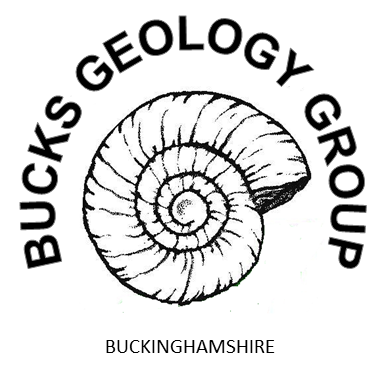|

Bucks Geology Group
The Local Geodiversity Action Plan (LGAP) Audit
The aim of the LGAP survey in 2006-7 was to seek to protect and improve the biodiversity of Buckinghamshire by investigating and recording the geological exposure of the County - a geological audit. This audit determined a value for sites using the LGAP procedure and Geodiversity Profile method developed by Roche Consulting Ltd. This value can now be used to compare sites across the county in an objective way.
The Geodiversity Profile is a standardised national framework for the evaluation and comparison of the geodiversity at geological and geomorphological sites. It
is a statement of the features of the geodiversity along with a set of values which record the scientific, educational and historical, cultural and aesthetic
importances arising from the geodiversity at the site. Determination of the Profile required a good knowledge of the geology (including geomorphology) of the site and the surrounding area, which was gained by a desk study of the relevant literature and prior experience, followed by fieldwork. The Profile was fully supported by a written justification. Both pure and applied geology elements of geodiversity were considered, and any observed
links with biodiversity were reported.
The Geodiversity Profile was developed
specifically for application at rock exposures in working, disused and abandoned
quarries, although it can be applied to any man-made or natural rock exposure
and other geological or geomorphological sites. 'Rock' is used in its geological sense to include unlithified sediments such as sands, clays, solifluct and landslide material. Geology and geodiversity are taken to include
geomorphology throughout.
The objectives of the Buckinghamshire LGAP survey were:
1. To undertake a desktop study to assess the geological potential in its widest sense.
2. Select a series of potential sites covering the whole county and the whole geological potential.
3. To undertake a geodiversity audit of selected sites using the LGAP procedures.
4. Alongside the LGAP audit to undertake an assessment of geological sites using the LGS (Local Geological Site)
proposal form and site criteria developed by BGG (Bucks Geology Group).
5. To link the geodiversity audit with other resources such as wildlife and archaeology, as well as other 'special' areas such as SSSIs.
6. To provide a database of the audit in two forms: (i) the 'raw' database with all supporting documentation; (ii) the publicly accessible database (LGAP profile forms, photographic record, etc) available from the Buckinghamshire County Museum
7. To ensure that the LGAP process is sustainable by post-audit training of members of the BGG.
8. To ensure that the group use the audit to produce conservation and management strategies.
9. To ensure the group negotiate inclusion of the audit into local authority policies (alongside LGS sites).
10. To raise awareness of geodiversity within the local authority, landowner, general public, education and other conservation group sectors.
11. To ensure the process is open to public consultation.
12. To ensure that partnerships are put in place that will ensure the success and consultation process of the LGAP audit (from the community, local authorities, business, industry and education sectors).
13. To ensure (through press releases and personal consultation) that as many people in the community are aware of the importance of geodiversity and the need for geological conservation and recording.
Sites reviewed under the LGAP audit were:
Beacon Hill, Ellesborough Bradenham Sarsens Brill Hill Buckingham Sand Pit College Lake Coombs Quarry Downley Common Gubbins Hole, Moor End Holtspur Bank Ivinghoe Beacon to Incombe Hole Medmenham Chalk Pit Northmoor Hill Pitstone No.2 Old Quarry Whiteleaf Cross NNR Whiteleaf Cross Quarry
|

